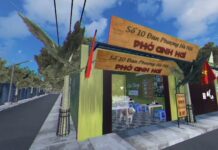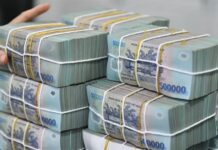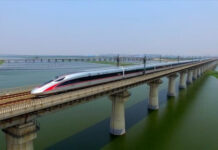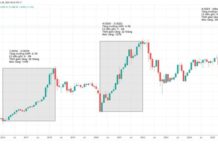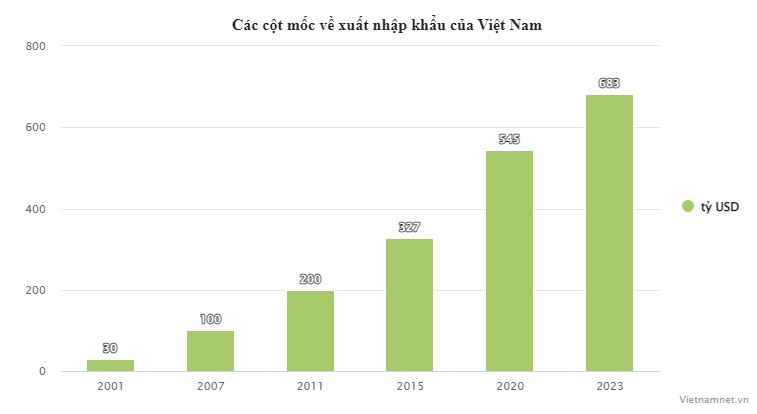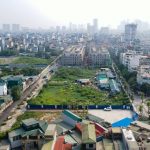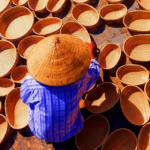From One of the Poorest Countries in the World to a Middle-Income Nation
For many years, when it comes to Vietnam, the World Bank (WB) has consistently praised the country’s development story as a remarkable success.
According to the WB, economic reforms initiated in 1986, coupled with favorable global trends, have rapidly propelled Vietnam from being one of the poorest countries in the world to a lower-middle-income country.
With a solid foundation, the WB assesses that the Vietnamese economy has demonstrated significant resilience during crisis periods. Economic growth is projected to reach 5.5% in 2024, up from 5% in 2023, driven by increasing global demand and the recovery of domestic consumer confidence.
Real GDP growth is expected to recover over the next three years, returning to pre-pandemic averages by 2026.
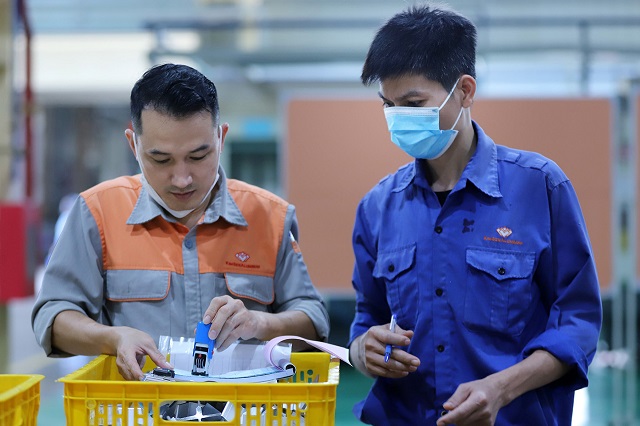 Vietnam boasts a rapidly growing and stable economy. Photo: VNN
|
Currently, Vietnam remains a lower-middle-income country. However, the opportunity for Vietnam to advance into the upper-middle-income group is within close reach.
According to World Bank data, in 2023, Vietnam’s gross domestic product (GDP) reached nearly $430 billion, and per capita income attained almost $4,347.
This figure is impressive compared to the per capita income of around $100 when Vietnam first opened its economy in 1988 and approximately $1,000 when the country joined the World Trade Organization (WTO) in 2007. The pace of growth in per capita income in Vietnam has outpaced that of many regional countries, including Thailand and the Philippines.
Under the new classification, effective from July 1, 2023, to July 1, 2024, per capita income levels are divided into four groups: countries with per capita income below $1,135 are classified as low-income countries; those with per capita income between $1,136 and $4,465 are lower-middle-income countries; nations with per capita income ranging from $4,466 to $13,845 are upper-middle-income countries; and countries with per capita income exceeding $13,845 are high-income countries.
As of 2023, Vietnam’s per capita income stood at nearly $4,347, placing it in the lower-middle-income group.
According to the classification effective from July 1, 2024, onwards, upper-middle-income countries are defined as those with per capita incomes ranging from $4,516 to $14,005.
Assuming a GDP growth rate of 6.5% in 2024 and a modest increase in population, each Vietnamese citizen will gain over $280, sufficient to propel the country into the upper-middle-income group with a per capita income ranging from $4,516 to $14,005, according to the classification effective from July 1, 2024.
Export Breakthrough and Destination for Many Multinational Corporations
Since its first Free Trade Agreement (FTA) over 30 years ago (with ASEAN) to the present, Vietnam has signed, implemented, or negotiated a total of 19 FTAs. Of these, 16 FTAs have been signed and implemented, while three are under negotiation.
The latest FTA signed in 2023 was the Vietnam-Israel FTA (VIFTA), which has elevated Vietnam into one of the most open economies with free trade relations with over 60 economies worldwide. Vietnam is also the only country to have signed FTAs with all major economic partners globally, including the United States, Japan, China, the European Union (EU), the United Kingdom, and Russia.
Free Trade Agreements (FTAs) are likened to high-speed highways facilitating Vietnam’s deeper international integration. Total import-export turnover in 2023 is estimated at $683 billion, including $354.5 billion in exports and $328.5 billion in imports.
In contrast, in 2007, the country’s total import-export turnover stood at just $100 billion. In 2001, Vietnam’s total import-export turnover was a more modest figure of over $30 billion.
In addition to exports, foreign investment attraction is another impressive aspect of Vietnam’s economy.
In 1991, registered foreign direct investment (FDI) in Vietnam amounted to $2.07 billion. Today, registered FDI has soared to over $487 billion.
According to the General Statistics Office, the results of FDI attraction and utilization are primarily reflected in the performance of FDI enterprises over the past 30 years, demonstrating the achievements of renewal and integration.
The FDI sector has increasingly affirmed its crucial role in Vietnam’s economy and actively contributed to the country’s socio-economic development. Numerous renowned global brands have established a presence in Vietnam, including Samsung, Intel, Microsoft, Toyota, Honda, KFC, and Starbucks, significantly contributing to state revenues. Most of these corporations intend to expand their operations and invest long-term in the country.
The FDI sector makes a significant contribution to the country’s gross domestic product (GDP), with its proportion increasing over the years. Specifically, the FDI sector’s contribution to GDP from 2016 to 2020 was 17.0%, 17.8%, 18.6%, 18.7%, and 18.8%, respectively.
The FDI sector has consistently been the most dynamic sector in the economy. The growth rate of added value in this sector has consistently outpaced the country’s overall GDP growth rate.
In 2016, the FDI sector’s added value increased by 8.7%, while the country’s GDP growth rate was 6.7%. In 2017, the respective growth rates were 11.8% and 6.9%. In 2018, they were 12.0% and 7.5%. In 2019, they were 8.1% and 7.4%. And in 2020, they were 3.5% and 2.9%.
Many Support Vietnam’s Recognition as a Market Economy by the United States
Currently, Vietnam awaits the United States’ recognition of its market economy status. This recognition could potentially open up more opportunities for Vietnamese exports. Numerous parties have expressed support for the United States to acknowledge Vietnam as a market economy.
According to SSI Securities Corporation, Vietnam is currently on the list of 12 non-market economy countries by the US Department of Commerce (DOC). As a result, the DOC uses third-country prices to calculate production costs when determining dumping margins in anti-dumping (AD) and countervailing duty (CVD) investigations involving Vietnamese exports.
Vietnam has been working towards meeting the six criteria for market economy recognition for quite some time, and these efforts have been further concretized after the two countries upgraded their relationship to a comprehensive strategic partnership.
Many organizations have voiced their support for the US to recognize Vietnam as a market economy, including the US-ASEAN Business Council (USABC), the Retail Industry Leaders Association (RILA), the American Association of Exporters and Importers (AAEI), the National Association of State Departments of Agriculture (NASDA), and the American Apparel and Footwear Association (AAFA).
Vietnam has been recognized as a market economy by 72 countries, including Canada, Australia, Japan, South Korea, and the United Kingdom. A positive decision from the United States would set a precedent for the European Union (EU) to follow suit.
According to SSI Securities Corporation, the most significant benefit of market economy recognition is that Vietnamese exporting enterprises can use their production costs in anti-dumping investigations, creating fair competition for Vietnamese goods compared to exports from other countries. In this case, anti-dumping duties would accurately reflect the production reality in Vietnam.
Additionally, Vietnamese exports could benefit from import tariffs if the United States applies the Generalized System of Preferences (GSP) to Vietnam.
In an interview, Mr. Nguyen Dinh Hien, representative of Thuan Aquatic Products Joint Stock Company (Khanh Hoa), shared that their main export product is frozen shrimp. Their factory in An Giang Province primarily serves the US market, while the factory in Khanh Hoa Province exports only about 12% of its production to the US.
The US is one of the largest shrimp consumers globally, while Vietnam has a competitive advantage in shrimp exports. The US is also Vietnam’s second-largest customer.
Therefore, if Vietnam is recognized as a market economy by the US, Thuan Aquatic Products JSC and other Vietnamese seafood exporters will benefit significantly. There will be greater stability in terms of taxes, and there will be an advantage in trade disputes, as a market economy status will lead to more accurate reflections and fewer lawsuits regarding anti-dumping measures.
Moreover, exports to the US market will become more stable, and partners will be more confident in placing large orders. Especially when on a level playing field, Vietnam will compete with other countries as a significant partner of the US, Mr. Hien emphasized.
Mr. Nguyen Dinh Tung, CEO of Vina T&T Group, also believes that recognizing Vietnam as a market economy will enhance the competitiveness of Vietnamese goods in the US market and reduce trade barriers.
Mr. Tung stated that in the US market, Vietnamese agricultural products often compete with those from Thailand, Mexico, and Ecuador. However, with market economy recognition, we will have a fair playing field, and everything will be more flexible.
“Thailand, for example, enjoys many advantages in the US market. They are currently exporting more than 20 types of fruits to the US, while Vietnam has only managed to export a few. If we are recognized, trade negotiations for new exports will be much easier and more convenient,” Mr. Tung shared.
Mr. Tung cited that it used to take several years, even a decade, to negotiate the export of a new fruit to the US. However, with market economy recognition, these barriers will be reduced, and the time required for negotiations will be shortened, making it much easier for new fruits to enter the US market.
While expanded market access will boost export growth, it is crucial to ensure product quality and meet market standards to strengthen exports to the US. This is an essential aspect that businesses should consider, he advised.
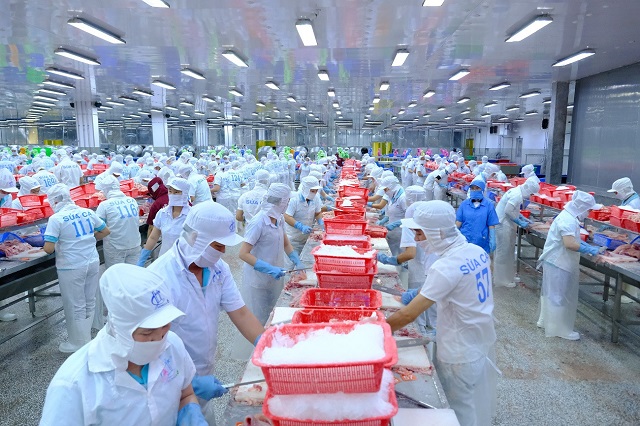
Seafood exports await new opportunities. Photo: Hoang Ha
|
Sharing his perspective, Mr. Vicente Nguyen, Chief Investment Officer (CIO) of AFC Vietnam Fund, believes that the shrimp industry will benefit the most if the US upgrades Vietnam to “market economy” status.
According to Mr. Vicente Nguyen, the US-ASEAN Business Council (USABC) previously supported the decision to upgrade Vietnam, with its head, Mr. Ted Osius, stating that Vietnam has been a market economy for a long time.
Mr. Vicente Nguyen analyzed that Vietnamese shrimp currently faces anti-dumping duties of up to 25.76% in the US market, while Thailand only faces 5.34%. Therefore, if Vietnam is recognized as a market economy, shrimp exporters to the US will gradually benefit from reduced tariffs over time, enhancing their competitiveness in this market.
The representative of AFC Vietnam Fund opined that the upgraded Vietnam-US relationship to a comprehensive strategic partnership is beginning to yield positive results. It is estimated that exports to the US could increase significantly in the next ten years.
If, over the past ten years (2013-2023), exports to the US grew from $24 billion to $100 billion, Mr. Vicente Nguyen predicts that, with this upgrade, “it will at least double from $100 billion to $200 billion.”
In the long run, according to SSI Securities Corporation, the most significant benefit of market economy recognition is that Vietnamese manufacturing enterprises can use their production costs in anti-dumping investigations, reducing the risk of facing anti-dumping duties in the future and enabling Vietnamese goods to compete more equitably in this market.
Sharing his insights with the media, Dr. Huynh The Du, Program Manager at the O’Neill School, Indiana University (USA), highlighted Vietnam’s efforts in promoting integration and improving the business environment over the years. Dr. Du asserted that these efforts are driven by our intrinsic desire to establish a market economy where resources are efficiently allocated and utilized, rather than to meet the requirements of any particular party. These efforts have been continuous and consistent.
“As our economy has developed and become more open, it is reasonable and highly beneficial for both the United States and Vietnam, as well as our bilateral relationship, for the US to recognize Vietnam as a market economy,” Dr. Huynh The Du stated.
Ambitious Goals Await Breakthroughs for New Opportunities
According to the World Bank, Vietnam has set ambitious development visions, aiming to become a high-income country by 2045. To achieve this goal, the economy needs to grow at an average annual rate of 6% per capita over the next 25 years.
Vietnam also strives for greener and more inclusive development. At COP27, Vietnam pledged to reduce methane emissions by 30% and end deforestation by 2030 while achieving net-zero carbon emissions by 2050. To fulfill these commitments, Vietnam has approved the “One Million Hectares of High-Quality and Low-Emission Rice” project at COP28, with the World Bank actively collaborating with Vietnam in designing and implementing this initiative.
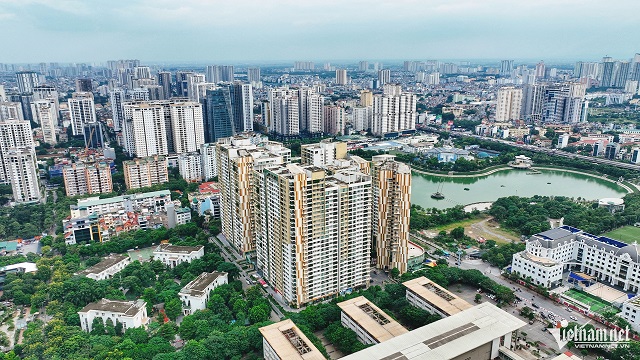
Vietnam awaits new opportunities.
|
“Vietnam’s future is shaped by several significant trends. The population is aging rapidly, global trade is declining, and environmental degradation, climate change, and automation are on the rise. The COVID-19 pandemic has posed unprecedented challenges, potentially hindering progress toward development goals,” the World Bank assessed.
According to the World Bank’s latest Vietnam Country Diagnostic Update, to overcome these challenges and achieve development goals, Vietnam needs to significantly improve policy implementation effectiveness, especially in finance, the environment, digital transformation, poverty reduction/social security, and infrastructure.
Luong Bang – Manh Ha – Tam An





